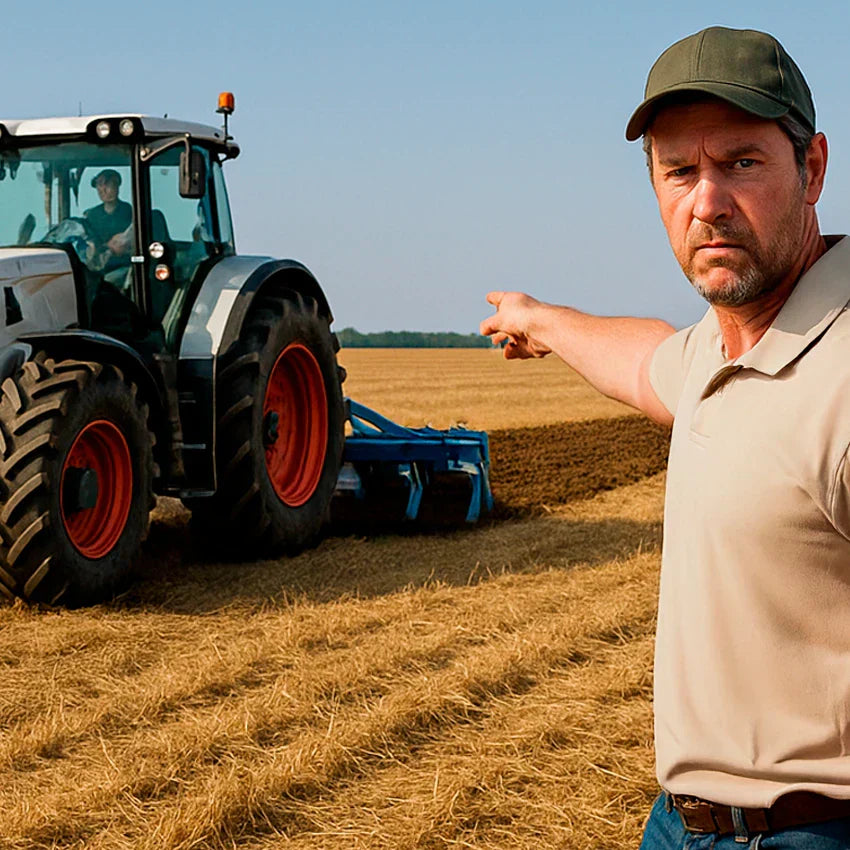Torque Reserve in Diesel Engines: Easy to Understand
In the realm of agricultural machinery, the term "torque reserve" is increasingly mentioned, especially among professionals dealing with high-performance tractors and implements. However, although it is a fairly simple concept, its understanding is sometimes complicated, leading to incorrect interpretations that can compromise the proper selection and operation of tractors. In this article, you will finally understand this term.
What is Torque Reserve?
Torque reserve is the ability of an agricultural machine's engine, such as a tractor, to handle sudden load variations with minimal loss of rotation. When the tractor traverses inclined terrains or compacted soils, the ideal engine should withstand this extra load by adjusting the torque to maintain performance without the need for gear shifting. This feature is essential in tractors as it allows the engine to overcome obstacles and quickly return to normal working conditions once the challenging situation stabilizes.
In modern tractors, this quick torque adjustment is due to advances in fuel injection systems and, more recently, the use of electronic controllers. These enable the torque reserve to rise significantly, and today cutting-edge engines can offer over 40% reserve, compared to the 15% that was deemed adequate a few years ago.
How Does Torque Reserve Work?
Torque reserve is the difference between the maximum torque (usually achieved at lower RPMs, around 1,400 RPM) and the torque generated at maximum power RPM, typically above 2,000 RPM. This behavior is illustrated in the graph below, where the torque increases as the RPM decreases, providing the necessary torque to overcome adverse conditions.

The higher the torque reserve, the more "elastic" the engine is. For example, an engine with a 40% torque reserve can operate efficiently at a lower RPM, around 1,800 RPM. This reduced RPM decreases fuel consumption while still maintaining at least a 20% torque reserve. Thus, the engine continues to respond quickly to load peaks, offering high performance with fuel economy.
How to Calculate Torque Reserve?
The torque reserve of an engine is often specified by the manufacturer. However, when this information is not available, it can be calculated by knowing the maximum torque and the torque at maximum power RPM. Using dynamometers, testing, and torque and power measurement equipment like the AG.X Series from AW Dynamometer, these values can be measured accurately. These tools are increasingly present in dealerships for demonstrations, tractor pre-delivery inspections, diagnostics, and preventive maintenance, making them essential tools, especially in after-sales.

Demystifying the Torque Reserve Percentage
A common confusion among operators and buyers is considering that torque reserve adds power to the engine. Suppose an engine has 300 HP and a 30% torque reserve; the mistaken belief would be that the engine has "extra power" of 90 HP. This calculation is incorrect. Torque reserve does not increase maximum power but indicates the engine's ability to maintain performance under variable load conditions without requiring gear shifts.
This misinterpretation can lead to the selection of undersized tractors, meaning less powerful than needed for the task, resulting in inefficient operations.
Conclusion
Torque reserve is a fundamental aspect of the engine that directly influences its efficiency, responsiveness, and fuel economy in challenging agricultural environments. Understanding this concept helps producers and operators choose the most suitable equipment for their needs, avoiding unnecessary expenses and increasing productivity.
Article Authorship:
Valter Henke - General Director
Link to the original article in Portuguese, published on Torqx News: https://torqx.co/pt/blogs/news/reserva-de-torque-em-motores-diesel
Images Torqx version: AGCO










Leave a comment